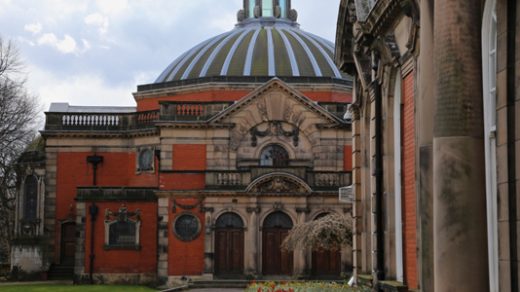Stronger as one

It’s been over a year since the Liverpool Diocese Schools Trust was established.To find out more Educate caught up with the Trust’s education officer Laurie Kwissa.
Once upon a time, the academy model was only used for schools that were seen to be struggling. Devised under the last Labour government the sponsored academy model saw ailing schools taken over and run by an academy trust. However, that concept has now changed significantly.
Today all schools are given the option of becoming an academy and joining an academy trust, regardless of how successful they are. And many have taken up that option. According to government figures, as of 2017, 68.8% of secondary pupils and 24.3% of primary pupils in England were attending academies.
While the model has been embraced by many it has not been without criticism. Indeed, a Panorama report which aired last September exposed one Trust, Bright Tribe, for misusing government funds and questions have been raised about finances.
Following the BBC’s report, however, the academies minister Lord Agnew said academies had to provide more financial information than other schools and that more than 95% of trusts had no issues.
Last year the Liverpool Diocese followed in the footsteps of many other Dioceses around the country and established its own Multi Academy Trust. Here the Trust’s educate officer Laurie Kwissa tells Educate how the first 12 months have gone.
Can you explain to me how the Trust came about?
The Trust was established in 2017 in response to the Government’s continuing academy agenda. The vast majority of Dioceses nationally had already established a Multi Academy Trust. Following extensive consultation with all Church of England Schools in the Diocese of Liverpool, and extremely positive responses, the Diocesan Board of Education unanimously agreed to develop a Multi Academy Trust of its own.
What was the thinking behind it?
There were three key drivers:
- To keep the Church of England family of (120) schools together;
- To keep Jesus at the heart of those schools; and
- To build on the very strong educational foundation we already had (90% of schools are judged as ‘Good’ or ‘Outstanding’)
We believe that as a diocesan led Multi Academy Trust (MAT) we can create stronger bonds of collaboration and cooperation, sharing good practice, addressing areas of weakness and offering increased opportunities for professional development.
Where did this initiative originate?
It was the Diocesan Director, Fr. Richard Peers, whose vision it was to have a Church of England Multi Academy Trust that is collaborative, values the local, values difference and is inclusive.
Were you nervous? What challenges did you foresee?
I don’t think nervous is the correct term. We knew there was a huge amount of work to do in establishing a Trust of the size intended, from scratch. We also knew and had faith in our schools and the amazing level and diversity of expertise within those schools. We had to create the structure that would allow schools to support one another, to share best practice and to work collaboratively, so that the children in our care flourish.
What challenges have you seen?
The main challenge has been around growth and scaling the LDST sustainably. You need to have an experienced Central Team in place in order to give schools the confidence to join, but no income is forthcoming until they do. As a consequence it is necessary to budget extremely carefully and to be flexible and innovative in providing the best possible services, support and solutions for each school, and centrally.
What has been the biggest success of the past year?
Headteachers working together to make collaborative decisions about the future of our Trust. The HT forum has been highly effective in giving HTs a voice
Agreeing a School Improvement strategy from the beginning has enabled us to get to know our schools well and provide support at the appropriate level
The Panorama documentary raised some concerns about the financial set up of academy trusts. What did you make of this?
Reputationally this could be very damaging. Our concern is that this could be perceived as normal practice in all MATs, when in fact it isn’t. Those who know LDST know that we are very different and that the top slice is used to support schools and improve outcomes for children. We have a small central team and in fact our CEO and Deputy CEO are not salaried.
How have pupils responded to the LDST model?
With no re-branding, no re-naming and no change of uniform, most pupils will have little awareness of the conversion their school has been through, which is what was intended. Children benefited from our Ethos Day when all schools came together to worship and through a Trust wide art project that was exhibited in the Cathedral. We aim to have a Trust pupil Forum in the near future to give pupils more ownership.
Pupils will benefit from our approach to school improvement, as networks are established to address the gaps identified.
And parents?
The response to consultations prior to conversions from parents was very positive. The outcomes, progress, rounded education and fulfilment of children will dictate the nature of parental responses moving forward.
What’s the plan going forward?
We are still in the early stages of developing the Trust and so there are many plans. The collaboration throughout the Trust is key to strategic thinking. We believe that local governors, headteachers and school practitioners are crucial in shaping the way ahead. We also value the experience of other Multi Academy Trusts and are keen to learn from them, as well as from the latest educational research.
We are currently in the process of developing a Trust wide approach to curriculum, assessment and provision for SEN children. Embedding these crucial as we believe that they will strengthen the work we do to ensure all children succeed.
We currently have the capacity to welcome a further eight schools and we expect to do that over the next couple of years. Once at twenty four schools we will reassess and ensure all is working well. We are likely at that point, to develop a ‘hub’ model MAT, primarily on a geographical basis in order to maximise the potential support and collaboration between schools.
What is an Academy?
Academies are independent, self-governing schools. They are not funded by the local authority in the way traditional schools are and instead receive funding directly from the government.



